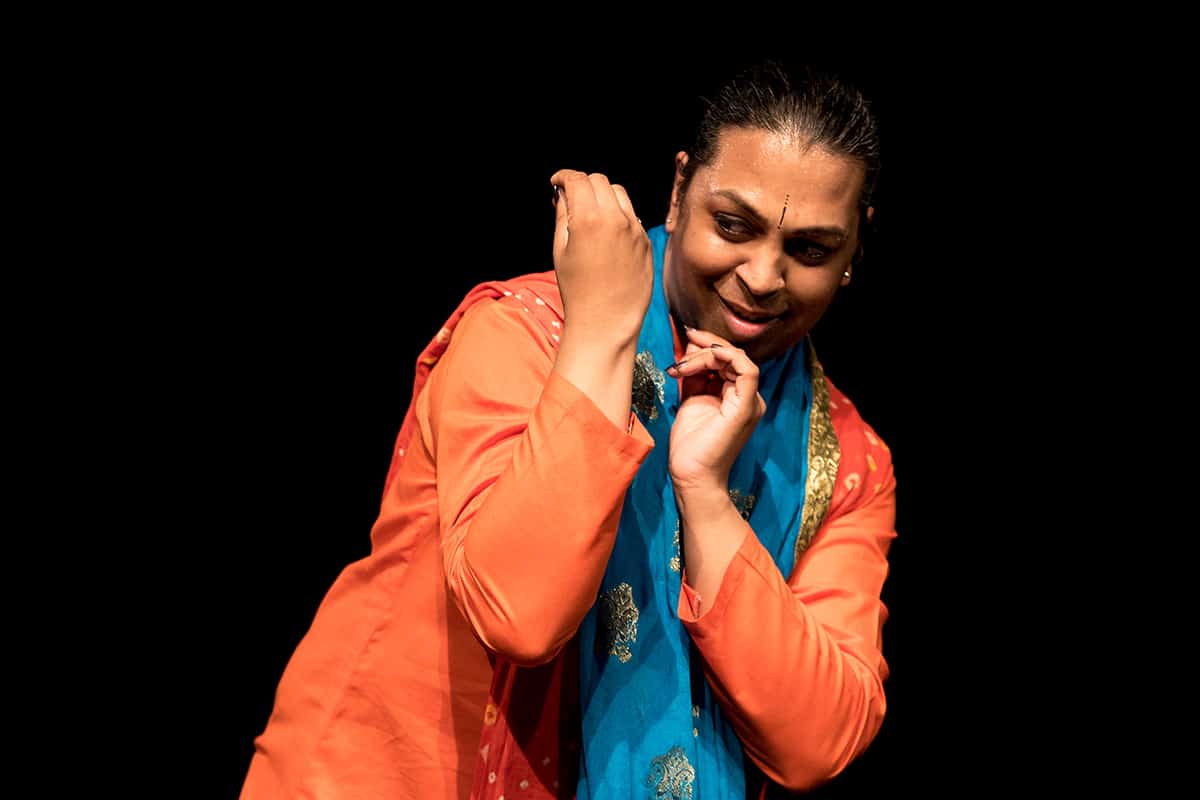In the dark, intimate theatre, I found myself sobbing. Using kathak in a contemporary context, Jaivant shared his journey in understanding his sexuality with the help of his faith and his cultural heritage. His first piece reflected how he drew strength and pride in his being from the powerful image of Ardhanareeshwara (‘the lord whose half is woman’, a composite of Shiva and Parvati). Showing both masculinity and femininity in his movements, he concluded with letting his hair loose, drawing a parallel with Lord Shiva’s tresses, chanting “Jhata Jhoot, Mat Gang-a Chalakata” (‘Like the flow of the river Ganges that emerges from the dark matted locks of his hair’). The chanting grew stronger, reflecting his inner voice and conviction. Diving deep into his faith and belief, he was now dancing to a bhajan (devotional song) of Surdas (the sixteenth-century poet devoted to Krishna). Jaivant represented himself as the quintessential nayika (female lover), shy and longing for a glimpse of his lord Krishna; his adornments were his dancing bells, his dance, his devotion. And then Krishna stole his heart.
As for me, they were tears not of sadness, but an emotional release, of joy. For he touched a chord in me. Do we not all want Krishna to steal our hearts?
Jaivant concluded his performance with the presentation of YAATRA (‘journey’ or ‘pilgirmage’), a work in progress, in contemporary style. Supported by poetry by Ali Harwood, Jaivant used a handbag as a metaphor for the issues that are currently foremost in his mind: his sexuality, heritage, faith, and dance and their interrelation. Digging deep into his handbag he retrieved a string of rudraksha (prayer beads) among other things. It seemed as if he gained strength from his faith, represented by the prayer beads, his constant companion. But his increasing speed and shortened intervals of a prayer ritual suggested that participation in mundane rituals alone is not necessarily faith. Finally, he put aside his prayer beads and retrieved a long string of ghungroos from his bag and examined them. It made me think how similar ghungroos are to prayer beads. Both are representations of his devotion. Are the ghungroos replacing the prayer beads?
Vrata Chigateri is a kuchipudi dancer based in Rotherh
